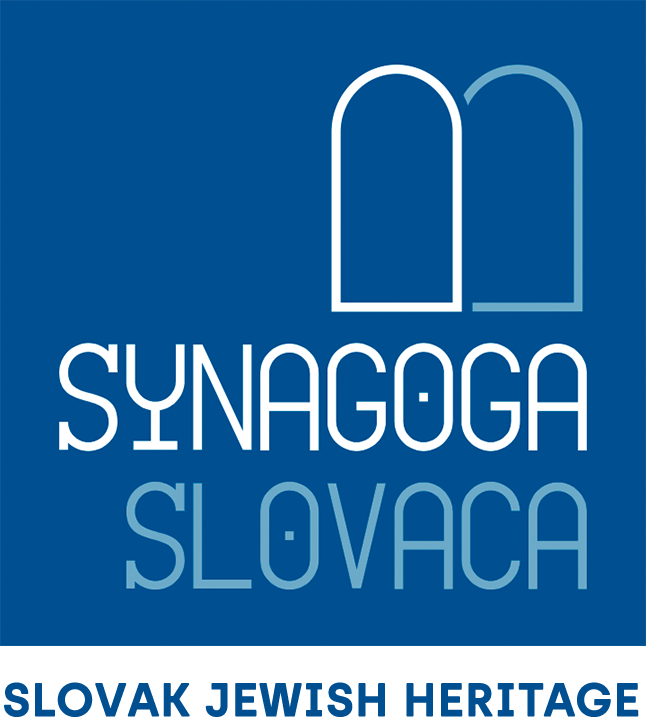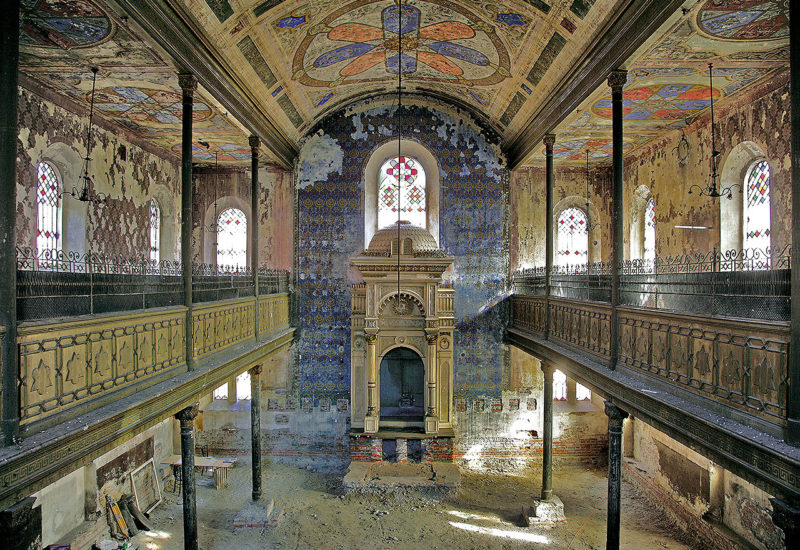Košice, Zvonárska Street, Orthodox synagogue
Košice’s most significant Jewish heritage site is the Orthodox Jewish community compound. The compound includes a historic mikvah (ritual bath), the offices of the Jewish community and rabbinate, and a small synagogue used for regular services. Next to it is a built-in sukkah with a sliding roof, which is still used. In the middle of the area stands the partially restored old Orthodox synagogue, which was used as library storage during the communist period. Designed by János Balog, a local contractor, the synagogue was constructed in 1899. The synagogue’s interior is solemn, with the women’s gallery supported by cast-iron columns. Only the ark and a basin on the western wall near the main entrance to the sanctuary remain from among the original furnishings. The somber interior has been kept unrestored, except the flooring, so that the building can be used for cultural purposes.
Before the Holocaust, Košice was home to one of the largest and most important Jewish communities in Slovakia. In 1930, the city’s more than 11,500 Jews made up 16.4 percent of the total population. Jews were allowed to settle here only after 1840, when the legal ban on Jewish residence was lifted. Several streams of Judaism existed here. There were the two major communities, Orthodox and Neolog, and also a Status Quo synagogue and a separate Hassidic synagogue. All this rich communal life was destroyed between May 16 and June 5, 1944, when almost all the Jewish citizens of Košice were deported to Auschwitz. Today, the Jewish community numbers about 250 members. Still, it is the second largest Jewish community in Slovakia, and strives to preserve an active life. Four out of the five major synagogues that operated here before the war still stand.
Address
Zvonárska 7
Košice
Coordinates
48°43’08.5″N
21°15’35.9″E

